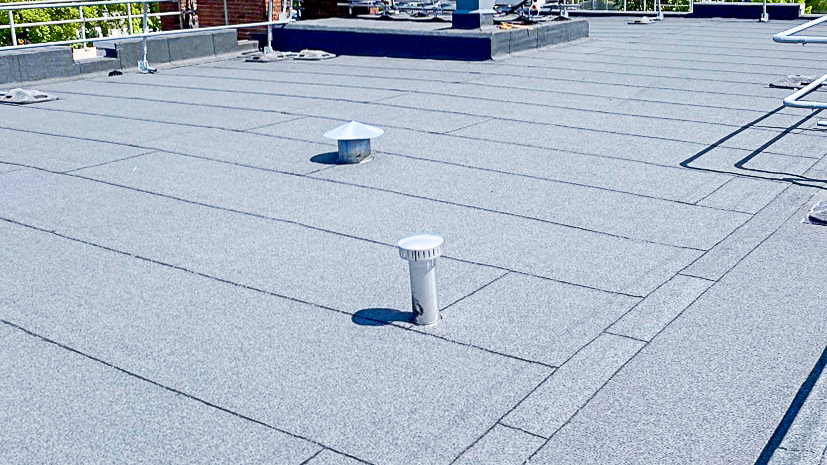Getting My L & L Roofing And Construction Of Gainesville To Work
L & L Roofing And Construction Of Gainesville Fundamentals Explained
Table of ContentsThe Of L & L Roofing And Construction Of GainesvilleGetting The L & L Roofing And Construction Of Gainesville To WorkSome Known Questions About L & L Roofing And Construction Of Gainesville.Things about L & L Roofing And Construction Of GainesvilleThe smart Trick of L & L Roofing And Construction Of Gainesville That Nobody is Talking AboutL & L Roofing And Construction Of Gainesville Can Be Fun For AnyoneThe smart Trick of L & L Roofing And Construction Of Gainesville That Nobody is Talking About
One of the most crucial functions of a roofing is to avoid water seepage. Normal roofing system examinations and upkeep are important to keep your home dry and totally free from water-related problems.From top notch products to impressive workmanship, we guarantee your brand-new roofing will serve you well for many years to come. Understanding the many features of a roofing and the importance of timely replacement is crucial for home owners. Your roofing system is not merely a safety covering; it's an integral component of your home's structural integrity, convenience, and value.
An Unbiased View of L & L Roofing And Construction Of Gainesville
Asphalt Roof shingles: Make-up roofing tiles made from asphalt-impregnated felt covered with mineral granules. * Base Flashing: That part of the flashing that is affixed to or relaxes on the roofing deck to route the circulation of water on the roof, or to secure versus the roofing deck.
Batten: Stress treated timber" thick, 2" large, 4' long. Toenailed to roof covering deck to hold specific sort of tile. Blister: Bubbles that may appear externally as asphalt roof after installment. Boot: Pre-formed flange positioned over a vent pipe to seal the roofing around the air vent pipeline opening.
4 Easy Facts About L & L Roofing And Construction Of Gainesville Shown
Cant Strip: A diagonal assistance used at the intersection of the roof deck with upright surfaces so that bends in the roof membrane layer to develop base flashings can be made without breaking the felts. Cap Flashing: The Section of the flashing attached to an upright surface to prevent water from moving behind the base blinking; occasionally described as counter flashing.
* Caulking/ Sealants: Glue sealant made use of to fill in small locations against water. Clearstory: The uppermost area of a roof covering airplane that goes down off without intersecting with an additional roofing system aircraft.
In some cases referred as boot. Conductor: A pipeline for communicating water from the roofing rain gutter to a drain, or from a roof drain to the tornado drainpipe; likewise called a leader, downspout, or downpipe. Coping: A building and construction system positioned at the top of the parapet wall to act as a cover for the wall surface.
What Does L & L Roofing And Construction Of Gainesville Mean?
* Visual: A wall of timber or masonry developed over the degree of the roofing, surrounding a roof covering opening such as for installment of roof covering followers or other tools. Cricket: A peaked saddle building at the rear of a smokeshaft to avoid build-up of snow and water around the chimney.' Deck: The surface mounted over the supporting mounting participants trusses, to which the roof material is used.
Diverter: Utilized to guide water - storm damage repair gainesville ga. Downspout: A pipe for draining pipes water from the rain gutters; in some cases, called a "leader". Leak side: A corrosion-resistant, non staining material used along the eaves and rakes to permit water run-off to drop free from underlying outdoor decking and/or fascia. Dry lap: A term explaining the lack of asphalt between the stacks of felt at the overlap in a BURM.
(https://blogfreely.net/llro0fings/nx4fdcomh6)* Edge steel: A term connecting to brake or extruded steel around the perimeter of a roofing system. On huge roof coverings this arrangement browse around these guys for the movement of the products forming the wall surfaces, roofing deck and roofing system treatment is normally made by intentionally dividing the building into areas, and covering separation in between adjacent areas with the expansion joint to enable movement yet maintain out the climate.
Not known Incorrect Statements About L & L Roofing And Construction Of Gainesville

The purpose of flashing is to stop the infiltration of water in addition to to give a drainage passage in between joints, most frequently the joint in between a roofing system and a well. See metal blinking. Blinking Base: The upturned side of the watertight membrane developed at a roof termination point by the expansion of the felts vertically over the cant strip and up the wall for a differing distance where they are safeguarded with mechanical fasteners.
Some Known Questions About L & L Roofing And Construction Of Gainesville.
Installation of composition roof covering, at this minimal incline, is not suggested and can leak as a result of blow back. gainesville roofing company. Fire Wall: Any kind of wall surface constructed for the function of restricting the spread of fire in a building. Such wall surfaces of solid masonry or concrete usually divide a structure from the foundations to about a meter above the roof
Hip: The angle created by the junction of two sloping roof aircrafts. Ice and Water Guard: A layer of waterproofing set up under the shingles at a roof's border, valley ridges. Effect Resistant: The Capacity of a roofing product to withstand damage (e.g. penetrating from falling objects (tree branches and hail storm), application devices, foot traffic, and so on.
Insulation: Any of a variety of materials created to reduce the flow of warm, either with vents typically set up in the soffit or eave of a roof covering. Lap: To cover the surface area of one tile or roll with another.
Some Known Questions About L & L Roofing And Construction Of Gainesville.
